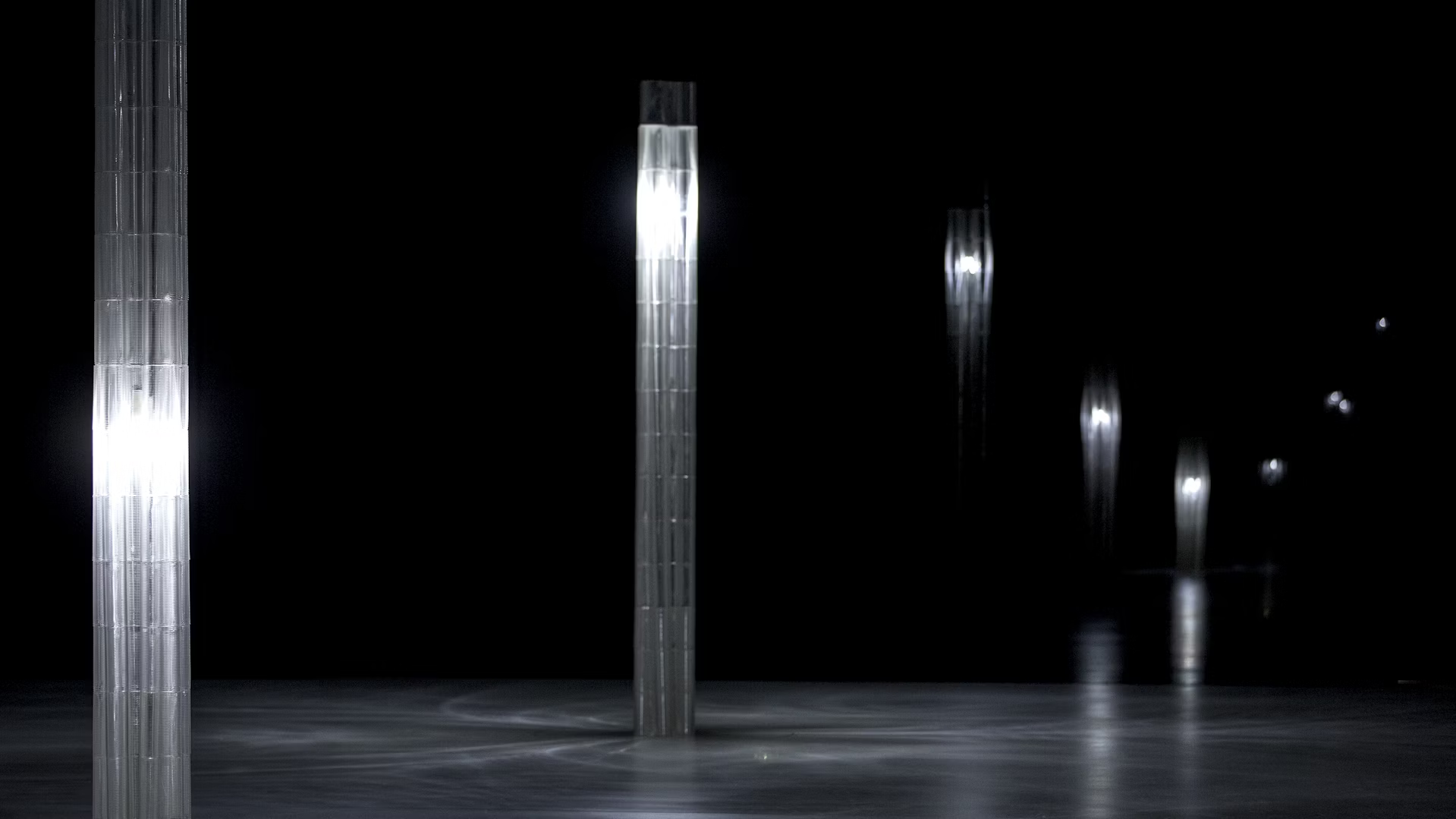GLASS II

Glass columns
Research team: Chikara Inamura, Michael Stern, Daniel Lizardo, Tal Achituv, Tomer Weller, Owen Trueblood, Nassia Inglessis, Giorgia Franchin, Marianna Gonzalez, Yinong Liu, Kelly Egorova, Peter Houk. Prof. Neri Oxman
Year: 2016
Location: Cooper Hewitt, Smithsonian Design Museum, 2017, New York, NY
Platform: Glass 3D Printing
Position
To demonstrate Glass II’s capabilities, we presented an installation for Milan Design Week debuting at the Milan Triennale on April 4th, 2017.
The installation is comprised of a series of 3m-tall glass columns fully manufactured with the Glass 3D Printing platform.
Extrusion Temperature in Celsius
Process
The computational framework used to generate each column’s form is directly influenced by the constraints of the manufacturing platform and structural system, demonstrating the ability to 3D print a wide range of shapes determined by desired mechanical and optical properties. By example, the higher the load, the greater the surface area of a column in plan view, the greater the number of lobes desired, the tighter the turning radius required for their 3D printing, and hence contributing to the geometric expression of the caustics.
Each column is fitted with a dynamic internal lighting system—una stellina—programed to travel up and down the column, generating a large caustic footprint with kaleidoscope-like patterns. The caustics are the sums of light rays reflected and/or refracted dynamically by the curved surface of the printed column over the surrounding walls of the Triennale. Over space, each successive column introduces a more complex caustic envelope with accompanied—and subtle—shifts in sound frequencies. Over time, each column’s light position and intensity varies, resulting in changes to the surface area, sharpness, and intensity of the caustic patterns. Combined, the overall experience challenges the perceived boundaries between time and space.
Project
Each column’s unique and constantly changing surface is the result of continuous branching into multiple lobes to support its load: for each, a unique network of radial arrays made of arcs; to each, a unique caustic footprint corresponding with its mechanical properties.

Credits
Collaborators & Contributors: Paula Aguilera, Mary Ann Babula, David J. Benyosef, Jeremy Flower, Sadie Forbes, Skutt Kilns, Andrew Magdanz, Robert Philips, Andy Ryan, Susan Shapiro, Neils La White, Jonathan Williams, Pentagram, Simpson Gumpertz & Heger, Front Inc., Almost Perfect Glass, Spiral Arts Inc., Rubix Composites, Deltech Furnaces, Mori Building Co. Ltd.- MORI Building, Lios, NOE LLC., MIT Center for Bits and Atoms, MIT Central Machine Shop, MIT Media Lab
Created in collaboration with Lexus for Yet, 2017 Lexus Design Awards, Milan Design Week, Salone del Mobile, Milan
All images and videos courtesy of Neri Oxman and The Mediated Matter Group







